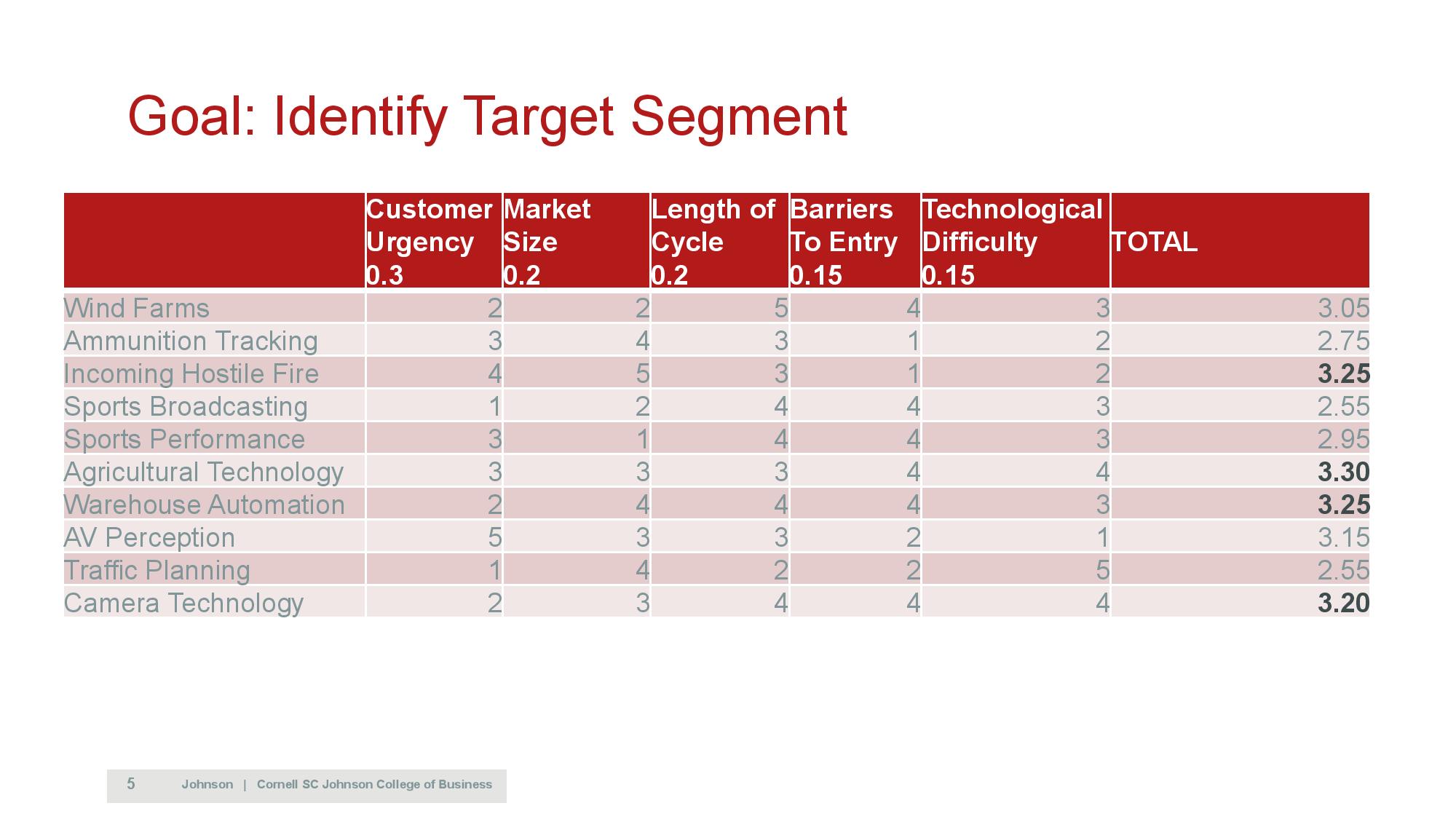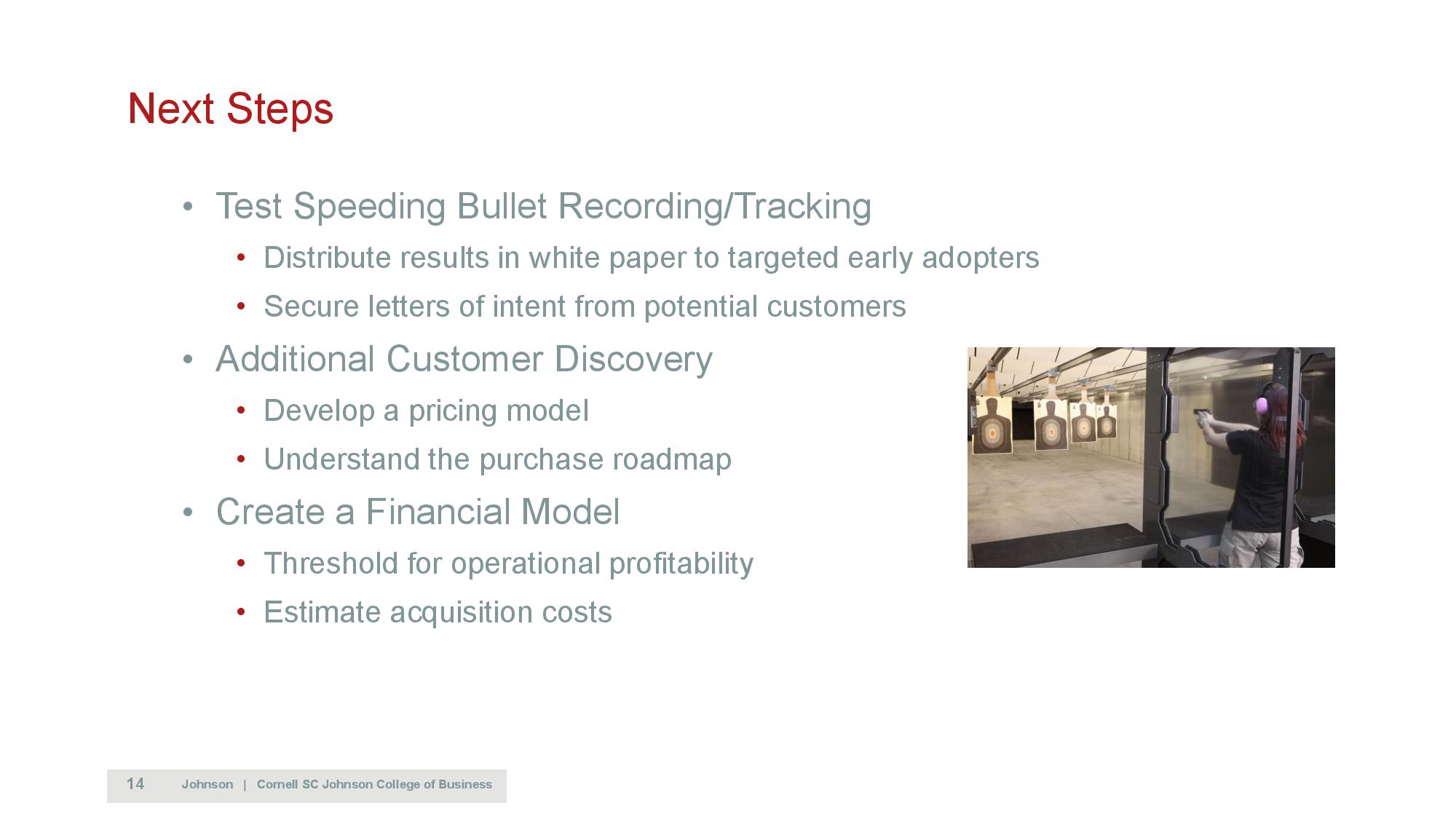BRINGING A NEW PRODUCT TO MARKET

Project Overview
In the Fall of 2019, I partnered with Taylor Clawson, a Cornell PhD Candidate in Mechanical Engineering, as well as five other MBA candidates to find commercialization opportunities for a computer vision algorithm.
Before we hop into the commercialization opportunities, it's helpful to understand what this technology is. Taylor's algorithm uses neuromorphic cameras for independent motion detection.
What are neuromorphic cameras?
Neuromorphic cameras measure changes in brightness; they have a wide range of sensitivity, and are capable of even tracking movement of the moon in broad daylight. Neuromorphic cameras are different from normal cameras in that they emit data through asynchronous impulses instead of frames. This reduces energy consumption and processing bandwidth. So what does this mean? Significantly less data needs to be processed (in comparison to high-speed cameras), so the data can be processed in real-time.
The following is the presentation our group gave at the end of Fall to the Big Red Tech Strategy Board and Faculty Advisors. Highlights:
- We conducted 39 customer interviews in 10 different possible customer segments
- We cut down the 10 possible customer segments to 4, and then to 1. This filtering process was based on many different factors, most notably: customer urgency and market size
- Ultimately, we decided to enter the defense customer segment
- We built a partnership with Niagra Falls SWAT for product testing, and assistant in the go-to-market strategy













